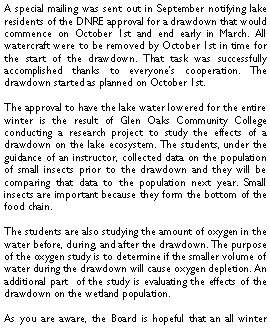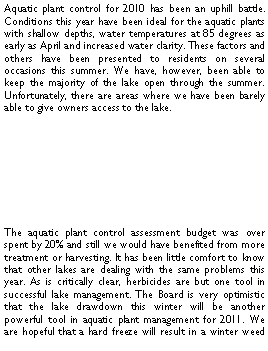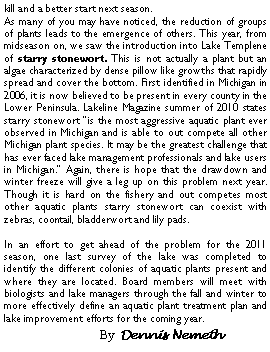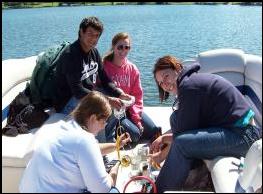In this issue: |





|
Fall Issue |
|
Lake Templene News Lake Templene Property Owners Association www.laketemplene.org |
|
drawdown will destroy a high percentage of weeds exposed to drying and freezing. This provides a great opportunity for shoreline clean-up. If you wish to do soil removal of the exposed lake bottom in front of your property, you must obtain a permit from DNRE. You can find the permits on line at “michigan.gov/deq”. By Jack Rote
|

|
October 2010 |
|
Lake Drawdown Message
Aquatic Weed 2010 Summary |
1
1 |
|
Announcements: Fall Meeting Date
Events |
2
2 |
|
Founders Landing Dedication
Lake Improvement Project
Website |
3
3
3 |
|
Nottawa Bridge Launch Site
Lake Quality Management
|
4
4 |
|
Protecting Water Quality |
5 |
|
|
|
|
|
|

|
Newsletter Editor: Dolly Padgurskis
Newsletter Staff: Susan Leist Sandy Rote Leslie Van Gelder
|


|
Pictured are students: Maykol Hernandez, Sarah Fennel, Rachel Schuler and Instructor Sarah Simmons |